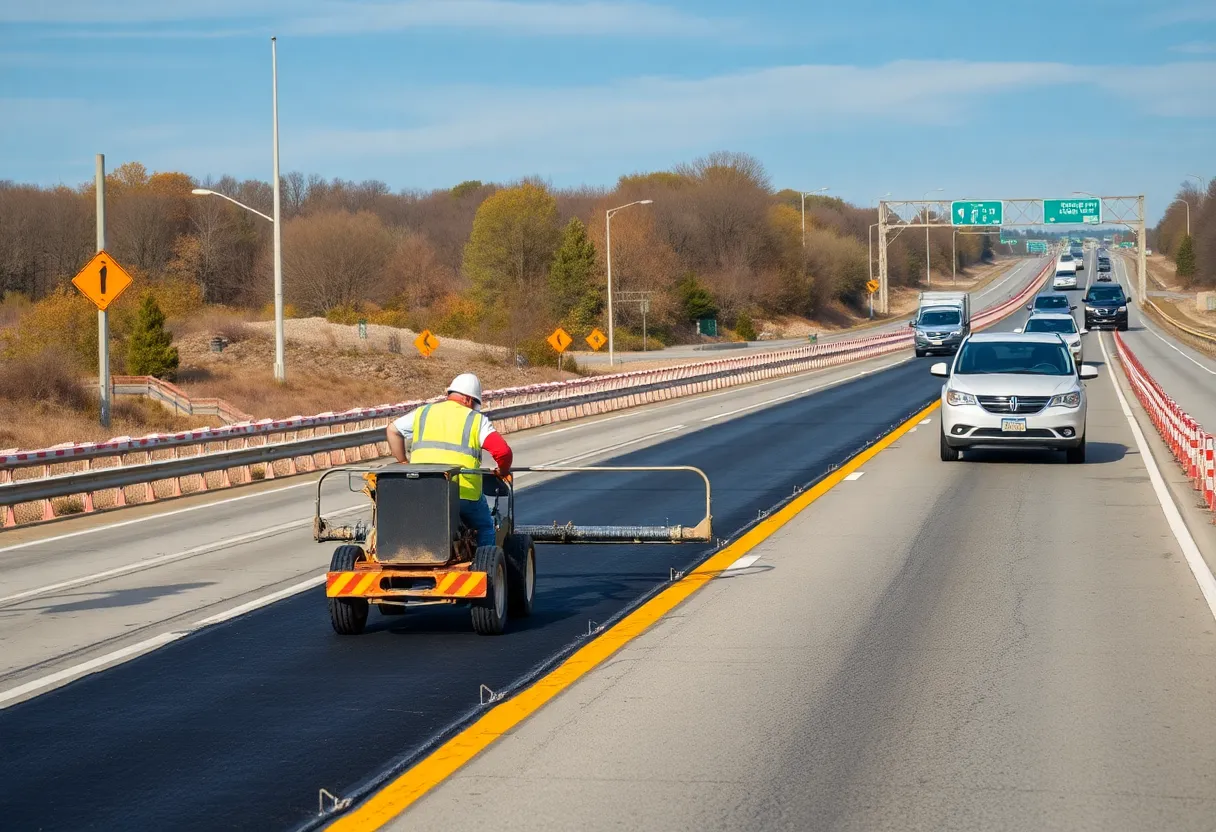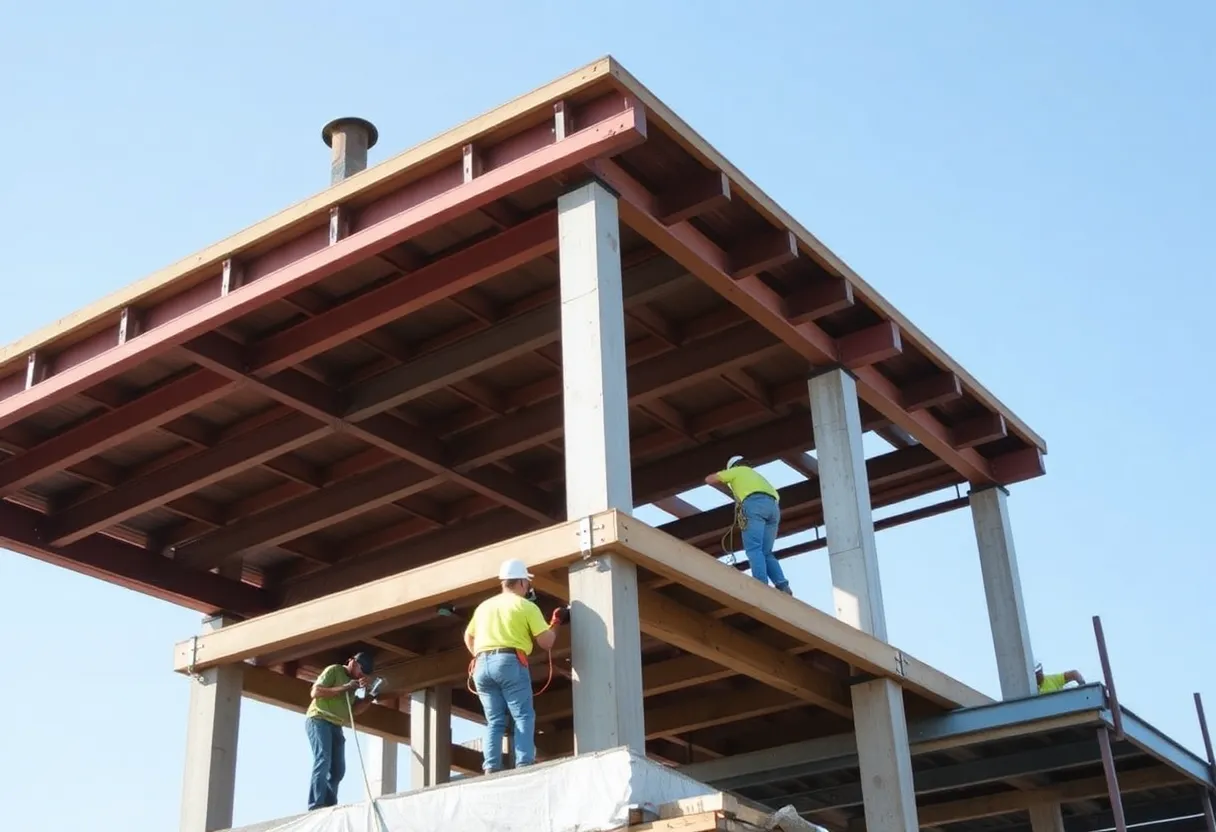Clay, New York, September 26, 2025
News Summary
Artificial intelligence cannot meaningfully reduce construction delays or budget overruns until jobsites collect structured, centralized data. The industry still relies on fragmented updates — messaging apps, paper checklists and scattered cloud folders — leaving analytics and AI models starved for reliable inputs. The piece compares construction to agriculture’s data-driven shift, highlights visual capture practices (helmet-mounted 360° cameras mapped to floor plans), and cites pilots: Zachry with ALICE for generative scheduling, Skanska’s Safety Sidekick, and Foresight’s consolidated forecasting. Practical steps: standardize workflows, digitize one process at a time, centralize records, and train teams so AI can deliver real value.
AI won’t fix construction’s delays and overruns until jobsites fix their data
Bottom line: Artificial intelligence will not solve construction delays or budget overruns without structured, centralized data. The industry still depends on scattered updates — messaging apps, paper checklists and cloud folders — that are often out of date. With information fragmented and delayed, AI remains a theoretical promise rather than a practical asset.
Key claims and hard numbers
20% of projects run late. 80% of projects go over budget. Those outcomes are directly linked to data gaps: when field records are inconsistent, incomplete or days old, analytics and AI models have nothing reliable to act on.
Why structured data matters now
Think of agriculture a decade ago. Farming was seasonal, equipment‑heavy and driven by gut instinct. Farmers began sampling soil, logging yields, and flying drones. Once structured data points accumulated in agriculture, AI models informed growers when to irrigate or harvest. Structured inputs turned raw field data into precise, daily guidance for farmers. Construction can follow the same path if teams capture data in consistent formats and store it centrally.
What a digital-first jobsites looks like
Digital workflows and standardized data capture prepare jobsites for AI‑driven insights. The prescription is simple and practical: work from the same plans, in the same place — choose the right software, align on standardized workflows, and ensure the whole team is trained and confident using it. Connect site and office teams using shared systems that sync in real time so everyone is working with the latest updates in a single project space. Centralize project data in the cloud to ensure seamless access, live collaboration and easy analysis regardless of team location.
How data must be captured
How data is captured matters as much as where it’s stored. Data must be structured from the start for AI to use it. AI can only work with what it understands; site activity needs to be documented in consistent, clear and connected ways. Examples of structured capture include photos and videos pinned to digital floor plans, automatically tagged with timestamps and location for accurate context; predefined digital forms and templates that guide on‑site teams to consistently collect and report the right information; and centralized document management with workflows, approvals and records stored in one place for easy access and tracking.
Visual data as a foundation
Not all data is created equal. Photos and videos captured at the right moment, from the right place, with the right context are among the most valuable records. When visual records are tied to digital floor plans, timestamped and tagged by location and trade, they become the basis for smart decision‑making rather than just records. Forward‑thinking teams are integrating visual capture into daily routines to build consistent, project‑wide visual histories. PlanRadar’s SiteView feature uses a helmet‑mounted camera to record site walks in 360° and automatically map imagery onto floor plans via an AI‑powered platform. That process creates a complete, structured visual log of how a site evolved over time.
Real projects showing the chain from structure to AI value
Zachry Construction adopted ALICE Technologies’ generative‑scheduling engine. Years before rollout, Zachry standardized how takeoffs, crew rates and weather delays were logged across projects. Because inputs share one format, ALICE can ingest them and generate hundreds of buildable sequences in minutes. What once required a full‑day workshop can now be a live what‑if session where planners adjust a resource or constraint and the schedule updates in real time. Early trials surfaced sequences that trimmed the critical path by up to two weeks and highlighted risks before ground was broken. The lesson is clear: without consistent quantities, rates and calendars, even the best AI tools are ineffective; with them, AI becomes a fast, tireless, fact‑driven planning partner.
For years Skanska USA logged safety observations, toolbox talks and near‑miss reports into siloed PDFs and spreadsheets. Those valuable records rarely surfaced beyond monthly meetings. Skanska created a central safety warehouse and standardized hazard categories, severity ratings and jobsite metadata for every record. With a clean data model, analysts produced reliable dashboards and trend maps rather than static summaries. Skanska launched Safety Sidekick, a generative AI chatbot trained solely on the firm’s incident history and best‑practice library. Field supervisors can pose plain‑language questions and receive instant answers with inspection excerpts and toolbox‑talk scripts. Skanska reports a 40% reduction in time spent preparing toolbox talks and increased day‑to‑day engagement with site safety protocols nationwide.
All scheduled exports were funneled into Foresight and mapped to a single activity taxonomy. A portfolio team managing 15 concurrent builds across North America, Europe and Asia replaced annual uploads with weekly P6 APIs, consolidating scattered files into a single clean dataset. Foresight’s AI forecast engine delivered probabilistic finish dates and early‑warning delay signals. After six months executives switched to monthly meetings, reporting costs dropped 90% and proactive resequencing avoided roughly $100 million in delay costs. Structured data enabled the results; AI made them visible.
Micron in Clay, New York — a case in scale and timing
Micron Technology filed a detailed site plan with the town of Clay, New York for a planned chipmaking complex (first time filing a detailed site plan). The site‑plan filing is 336 pages. The filing offers the clearest look yet at the sprawling complex Micron intends to build in the upstate New York town and starts a town review Micron will need to start construction of the fabrication plants. The site plan application focuses heavily on the first fab. Each fab will cover 28 acres of land. Micron says it plans to spend up to $100 billion over the next 20 years building four fabs in succession. The project is backed by up to $25 billion in taxpayer subsidies. If all four fabs are built, Micron’s campus would be the largest private development in New York state history and one of the biggest private developments in the nation.
Local hiring and approvals
The town will begin formal reviews and may need to hire additional code enforcement staff once construction starts. Micron has hired a major construction firm to begin clearing and leveling the site, and work to clear 700 acres can start without site plan approval. Site‑plan approval is required before buildings are constructed; construction on the first fab is scheduled to begin in late 2025.
New York City employment snapshot
In 2024 the city averaged 143,100 construction jobs. That is an 11% decrease from 161,300 construction jobs in 2019. The main factor cited in the sluggish hiring is lagging demand for non‑residential construction. Residential spending surpassed 2019 levels by 2023, reaching $22.8 billion, while nonresidential spending was $22.2 billion in 2023, 3% lower than in 2019. The slow recovery disproportionately harmed immigrants, who held 61% of the city’s construction jobs as of 2023.
Regional firm restructuring
FlatironDragados is reorganizing its New York and New Jersey operations to create SPC Construction, a regional civil construction firm built from three longtime area companies focused on tunnels, bridges, roadways and water systems. SPC Construction will operate as a subsidiary and is aimed at concentrating regional specialties, simplifying client delivery and centralizing operations.
Practical next steps for teams
Getting started with AI doesn’t require overhauling an entire tech stack; it requires structuring existing work to make it searchable, analyzable and automatable. Identify one workflow that frustrates the team, digitize and structure it, and prove AI’s potential incrementally. Take one process. Digitize it. Structure it. That’s how to prepare for AI.
Bottom line and call to action
Until data is current, complete and centralized, AI remains a theoretical promise rather than a practical asset. The key to unlocking AI’s potential in construction lies in utilizing a single platform that standardizes processes, empowers team collaboration, and captures and organizes data in one place. When a digital foundation is in place, project data becomes usable — clean, consistent and complete — and AI can begin to identify patterns, flag risks and support faster, more informed decisions.
FAQ
Q: What is the main barrier to AI helping construction projects?
A: Artificial intelligence will not solve construction delays or budget overruns without structured, centralized data.
Q: How common are delays and overruns?
A: 20% of projects run late. 80% of projects go over budget.
Q: What specific Micron filing should local reviewers expect?
A: Micron Technology filed a detailed site plan with the town of Clay, New York for a planned chipmaking complex (first time filing a detailed site plan). The site‑plan filing is 336 pages.
Q: How large will each fab be?
A: Each fab will cover 28 acres of land.
Q: How much is Micron planning to spend?
A: Micron says it plans to spend up to $100 billion over the next 20 years building four fabs in succession. The project is backed by up to $25 billion in taxpayer subsidies. If all four fabs are built, Micron’s campus would be the largest private development in New York state history and one of the biggest private developments in the nation.
Q: What were agriculture’s steps before AI worked?
A: Farmers began sampling soil, logging yields, and flying drones.
Q: Which products and pilots show structured visual capture in construction?
A: PlanRadar’s SiteView feature uses a helmet‑mounted camera to record site walks in 360° and automatically map imagery onto floor plans via an AI‑powered platform.
Q: What does the Zachry example demonstrate?
A: Zachry Construction adopted ALICE Technologies’ generative‑scheduling engine. Because inputs share one format, ALICE can ingest them and generate hundreds of buildable sequences in minutes.
Q: How did the global portfolio consolidate schedules for AI forecasting?
A: All scheduled exports were funneled into Foresight and mapped to a single activity taxonomy.
Q: What safety data change did Skanska make?
A: For years Skanska USA logged safety observations, toolbox talks and near‑miss reports into siloed PDFs and spreadsheets.
{
“@context”: “https://schema.org”,
“@type”: “FAQPage”,
“mainEntity”: [
{
“@type”: “Question”,
“name”: “What is the main barrier to AI helping construction projects?”,
“acceptedAnswer”: {
“@type”: “Answer”,
“text”: “Artificial intelligence will not solve construction delays or budget overruns without structured, centralized data.”
}
},
{
“@type”: “Question”,
“name”: “How common are delays and overruns?”,
“acceptedAnswer”: {
“@type”: “Answer”,
“text”: “20% of projects run late. 80% of projects go over budget.”
}
},
{
“@type”: “Question”,
“name”: “What specific Micron filing should local reviewers expect?”,
“acceptedAnswer”: {
“@type”: “Answer”,
“text”: “Micron Technology filed a detailed site plan with the town of Clay, New York for a planned chipmaking complex (first time filing a detailed site plan). The site‑plan filing is 336 pages.”
}
},
{
“@type”: “Question”,
“name”: “How large will each fab be?”,
“acceptedAnswer”: {
“@type”: “Answer”,
“text”: “Each fab will cover 28 acres of land.”
}
},
{
“@type”: “Question”,
“name”: “How much is Micron planning to spend?”,
“acceptedAnswer”: {
“@type”: “Answer”,
“text”: “Micron says it plans to spend up to $100 billion over the next 20 years building four fabs in succession. The project is backed by up to $25 billion in taxpayer subsidies. If all four fabs are built, Micron’s campus would be the largest private development in New York state history and one of the biggest private developments in the nation.”
}
},
{
“@type”: “Question”,
“name”: “What were agriculture’s steps before AI worked?”,
“acceptedAnswer”: {
“@type”: “Answer”,
“text”: “Farmers began sampling soil, logging yields, and flying drones.”
}
},
{
“@type”: “Question”,
“name”: “Which products and pilots show structured visual capture in construction?”,
“acceptedAnswer”: {
“@type”: “Answer”,
“text”: “PlanRadar’s SiteView feature uses a helmet‑mounted camera to record site walks in 360° and automatically map imagery onto floor plans via an AI‑powered platform.”
}
},
{
“@type”: “Question”,
“name”: “What does the Zachry example demonstrate?”,
“acceptedAnswer”: {
“@type”: “Answer”,
“text”: “Zachry Construction adopted ALICE Technologies’ generative‑scheduling engine. Because inputs share one format, ALICE can ingest them and generate hundreds of buildable sequences in minutes.”
}
},
{
“@type”: “Question”,
“name”: “How did the global portfolio consolidate schedules for AI forecasting?”,
“acceptedAnswer”: {
“@type”: “Answer”,
“text”: “All scheduled exports were funneled into Foresight and mapped to a single activity taxonomy.”
}
},
{
“@type”: “Question”,
“name”: “What safety data change did Skanska make?”,
“acceptedAnswer”: {
“@type”: “Answer”,
“text”: “For years Skanska USA logged safety observations, toolbox talks and near‑miss reports into siloed PDFs and spreadsheets.”
}
}
]
}
Key features at a glance
| Feature | Description |
|---|---|
| Structured data | Centralized, consistent records that AI can analyze and act on |
| Single platform | Standardizes processes, syncs site and office, and stores project data in the cloud |
| Visual capture | Photos and videos pinned to floor plans, timestamped and geotagged for context |
| PlanRadar SiteView | Helmet‑mounted 360° captures mapped to floor plans to build a visual log |
| Zachry + ALICE | Standardized inputs enabled generative scheduling to produce faster, actionable sequences |
| Skanska Safety Sidekick | Central safety warehouse plus a generative AI assistant to speed toolbox talks and engagement |
| Foresight consolidation | Mapped exports to a single taxonomy to enable probabilistic forecasting and large savings |
| Micron Clay site plan | 336‑page submission for a multi‑fab campus that could reshape regional construction workloads |
Deeper Dive: News & Info About This Topic
Additional Resources
- BoiseDev: Micron Clay expansion
- Wikipedia: Micron Technology
- The New York Times: OpenAI data centers in the United States
- Google Search: OpenAI data centers United States
- Crain’s New York: NYC construction jobs still below pre-pandemic levels
- Encyclopedia Britannica: New York City construction jobs
- Construction Dive: FlatironDragados forms SPC Construction
- Google Scholar: FlatironDragados SPC Construction
- CBS News: Construction continues on NYC’s first soccer stadium (video)
- Google News: NYC first soccer stadium construction
Author: Construction FL News
The FLORIDA STAFF WRITER represents the experienced team at constructionflnews.com, your go-to source for actionable local news and information in Florida and beyond. Specializing in "news you can use," we cover essential topics like product reviews for personal and business needs, local business directories, politics, real estate trends, neighborhood insights, and state news affecting the area—with deep expertise drawn from years of dedicated reporting and strong community input, including local press releases and business updates. We deliver top reporting on high-value events such as the Florida Build Expo, major infrastructure projects, and advancements in construction technology showcases. Our coverage extends to key organizations like the Associated Builders and Contractors of Florida and the Florida Home Builders Association, plus leading businesses in construction and legal services that power the local economy such as CMiC Global and Shutts & Bowen LLP. As part of the broader network, including constructioncanews.com, constructionnynews.com, and constructiontxnews.com, we provide comprehensive, credible insights into the dynamic construction landscape across multiple states.





